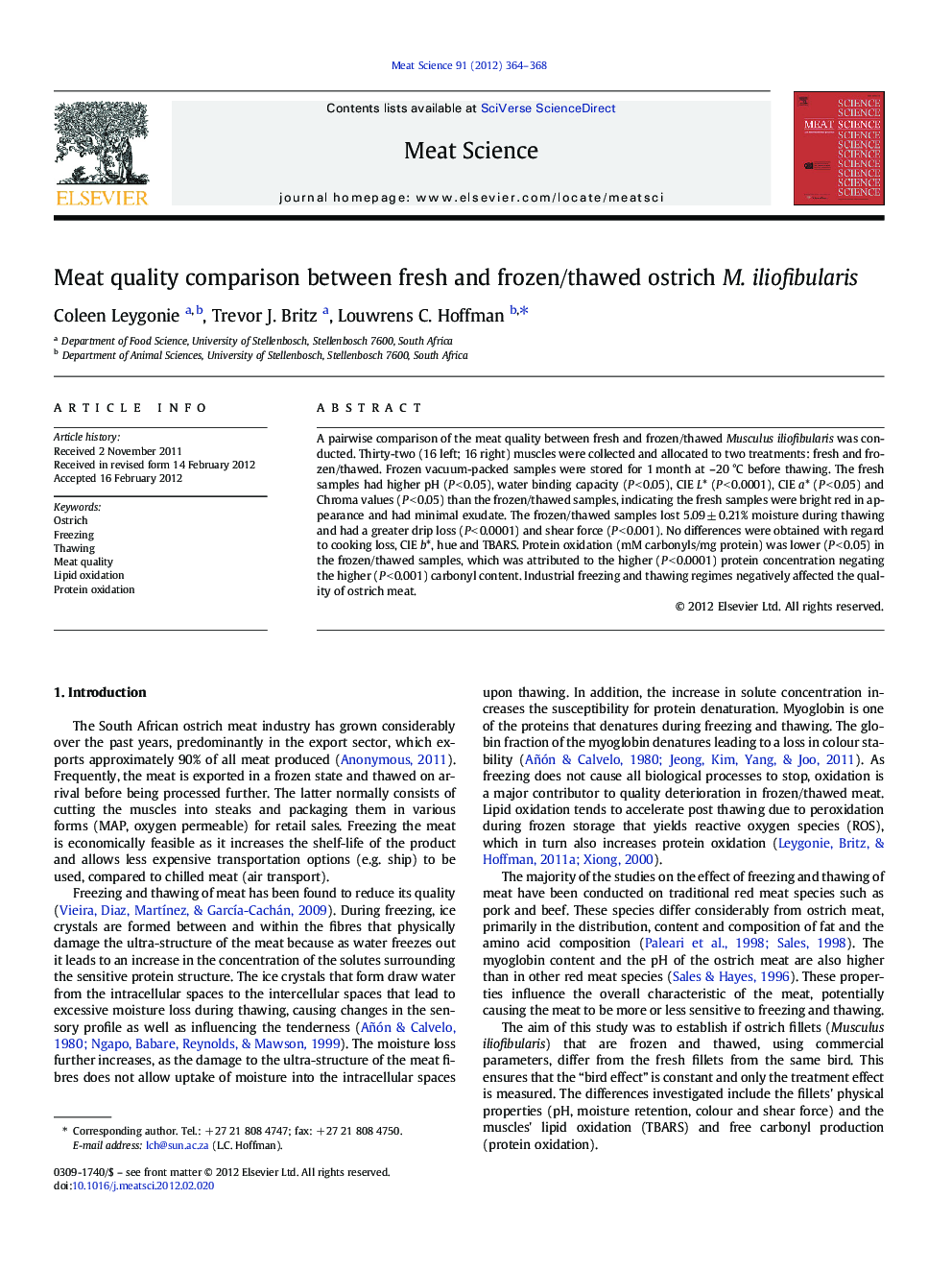| Article ID | Journal | Published Year | Pages | File Type |
|---|---|---|---|---|
| 5792522 | Meat Science | 2012 | 5 Pages |
A pairwise comparison of the meat quality between fresh and frozen/thawed Musculus iliofibularis was conducted. Thirty-two (16 left; 16 right) muscles were collected and allocated to two treatments: fresh and frozen/thawed. Frozen vacuum-packed samples were stored for 1 month at -20 °C before thawing. The fresh samples had higher pH (P < 0.05), water binding capacity (P < 0.05), CIE L* (P < 0.0001), CIE a* (P < 0.05) and Chroma values (P < 0.05) than the frozen/thawed samples, indicating the fresh samples were bright red in appearance and had minimal exudate. The frozen/thawed samples lost 5.09 ± 0.21% moisture during thawing and had a greater drip loss (P < 0.0001) and shear force (P < 0.001). No differences were obtained with regard to cooking loss, CIE b*, hue and TBARS. Protein oxidation (mM carbonyls/mg protein) was lower (P < 0.05) in the frozen/thawed samples, which was attributed to the higher (P < 0.0001) protein concentration negating the higher (P < 0.001) carbonyl content. Industrial freezing and thawing regimes negatively affected the quality of ostrich meat.
